
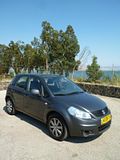
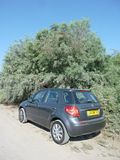
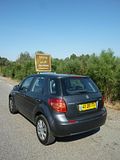
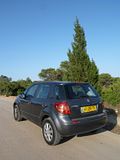
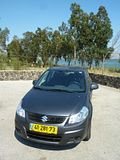
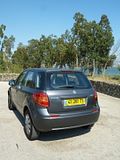
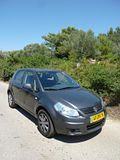
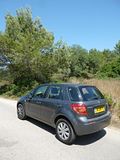
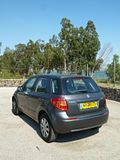
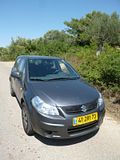


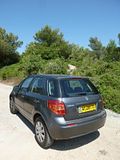
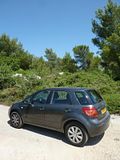

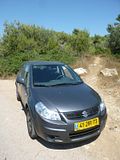
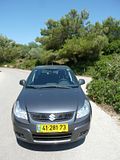
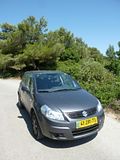
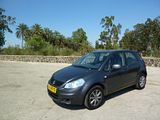
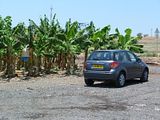
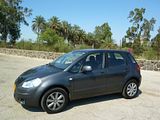
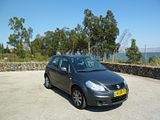
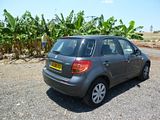
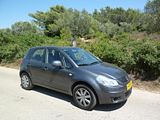
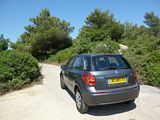
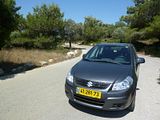
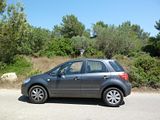

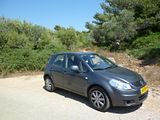
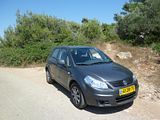
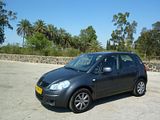
Ask the average motorist to name a Japanese car brand, and they would likely respond Toyota, or Nissan, perhaps Honda or even Mazda. Those who were follow rallying a few years ago, or count themselves in the enthusiast category would perhaps venture Subaru. There would be no particular surprise in this, as indeed these are the brands that sell the most cars in many Western European markets, the UK included. Life for those who sell smaller volumes of cars is not so easy, even when the cars they sell are actually quite good. Suzuki comes in this category, and after finding some sales success with very small micro-cars (their heritage when they diversified from bikes to cars) and small/cheap 4x4s such as the Vitara, their products have been a collection of “hit” (the previous and current generation Swift comes to mind) and “miss” (the X90, the Liana and the Wagon R). Never afraid of trying something new and frequently with niche interest, in 2006 we saw yet another attempt to find sales success with a Giugiaro designed car co-branded with Fiat: the Suzuki SX4 and Fiat Sedici. Sales of the latter reached the heady total of 4 in the UK in 2010, a huge decline after quite a promising start, though the Suzuki, always expected to be the stronger seller, has fared a little better. Launched initially solely in four wheel drive form, the range grew in the early years to include a front wheel drive car, a diesel powered model and – thanks to calls for the body style from other markets – a rather gawky three box saloon. It is not the sort of car I would expect to receive as a rental in the UK, but it was precisely what Hertz Israel gave me at Ben Gurion airport. My test SX4 was finished in a rather dull grey colour, and when the layer of dust and grimy wheel trims were taken into account, as well as a fair number of scratches and scrapes, it did not look the most enticing prospect for nearly 2 weeks use, even if most of the time it would simply shuttle between the hotel and IBM Research Lab, a 10 – 15 minute journey of 7.5 km each way.
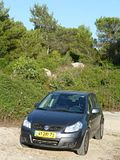
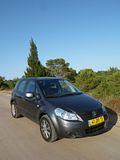
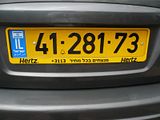
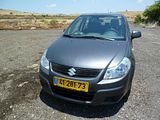
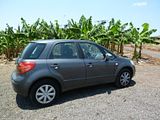

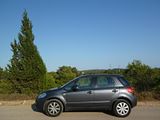 In the Israeli market, the SX4 is still offered with a choice of 1.5 litre and 1.6 litre engines. There were no markings on the car, the engine or the paperwork to indicate which version I had received. All I can tell is that it was petrol powered, and there was no evidence that it had 4 wheel drive First impressions were not too bad once I had the car started, though that was not always easy. What looks like an after-market immobiliser system is fitted to the left of the wheel. In theory, you simply turn the ignition on, enter the 5 digit code that is stuck to the key fob, then you can start the car. However, it seems to be impossible to do this on the first attempt, and on some occasions you need three or four attempts before it finally works. Even after nearly 2 weeks, I had not figured out how to make it work first time round. Once started, and time to move off, you note that there is modest acceleration, which seemed fine for keeping up with the flow of traffic. However, northern Israel is quite hilly, and a combination of inclines and the need to follow a colleague on one sight-seeing morning found me having to rev the engine very hard indeed to try to keep up with his 1.6 litre Scenic. The engine stayed smooth, but was very noisy, and the bar chart instant fuel consumption readout went off the scale (at 30 l/100km) in the process. Fill the car with four people and luggage and I think you might want for more power. The test car had an old-style four speed automatic transmission which was both easy to use and very smooth in operation. The steering is light, but far from as feel-less as in many recent test cars, and proved appropriately weighted for the everyday driving tasks for which the Suzuki would doubtless be used, but there is no sense of fun there. The same applies to the handling. And the brakes. Israel’s roads vary from recently resurfaced smooth motorway style surfaces to those with potholes, bumps and ridges. The SX4 had no issues with the better quality roads and was not even unduly troubled by the latter, meaning that it was quite a comfortable cruiser for the longer journeys on which I took it. Provided the engine was not being caned hard, then noise levels were moderate, too. With plenty of glass, including an extra quarterlight aft of the front door, the SX4 was easy to manoeuvre, and I was able to thread it in the narrow streets of the old part of Nazareth without undue problem.
In the Israeli market, the SX4 is still offered with a choice of 1.5 litre and 1.6 litre engines. There were no markings on the car, the engine or the paperwork to indicate which version I had received. All I can tell is that it was petrol powered, and there was no evidence that it had 4 wheel drive First impressions were not too bad once I had the car started, though that was not always easy. What looks like an after-market immobiliser system is fitted to the left of the wheel. In theory, you simply turn the ignition on, enter the 5 digit code that is stuck to the key fob, then you can start the car. However, it seems to be impossible to do this on the first attempt, and on some occasions you need three or four attempts before it finally works. Even after nearly 2 weeks, I had not figured out how to make it work first time round. Once started, and time to move off, you note that there is modest acceleration, which seemed fine for keeping up with the flow of traffic. However, northern Israel is quite hilly, and a combination of inclines and the need to follow a colleague on one sight-seeing morning found me having to rev the engine very hard indeed to try to keep up with his 1.6 litre Scenic. The engine stayed smooth, but was very noisy, and the bar chart instant fuel consumption readout went off the scale (at 30 l/100km) in the process. Fill the car with four people and luggage and I think you might want for more power. The test car had an old-style four speed automatic transmission which was both easy to use and very smooth in operation. The steering is light, but far from as feel-less as in many recent test cars, and proved appropriately weighted for the everyday driving tasks for which the Suzuki would doubtless be used, but there is no sense of fun there. The same applies to the handling. And the brakes. Israel’s roads vary from recently resurfaced smooth motorway style surfaces to those with potholes, bumps and ridges. The SX4 had no issues with the better quality roads and was not even unduly troubled by the latter, meaning that it was quite a comfortable cruiser for the longer journeys on which I took it. Provided the engine was not being caned hard, then noise levels were moderate, too. With plenty of glass, including an extra quarterlight aft of the front door, the SX4 was easy to manoeuvre, and I was able to thread it in the narrow streets of the old part of Nazareth without undue problem.
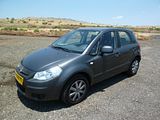

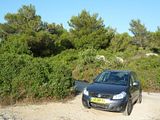

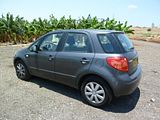 Open the door and look inside, and you are greeted by a dark grey dashboard and seats that are finished with black outers and a lighter grey inset. There is nothing visually interesting at all, but nor is there anything that really irks or annoys. A simple cowl covers the main dials, which comprise rev counter and speedo, and smaller fuel and temperature gauges, with a digital display between them showing the odometer and a series of other pieces of information which can be cycled through by pressing the small buttons that protrude from the displays in the manner of resetting the trip meter. Stalks on either side of the column do the lights, indicators and wipers, and the centre of the dash contains an audio unit and the air conditioning controls. All very intuitive to use, but with not an ounce of flair about the design.
Open the door and look inside, and you are greeted by a dark grey dashboard and seats that are finished with black outers and a lighter grey inset. There is nothing visually interesting at all, but nor is there anything that really irks or annoys. A simple cowl covers the main dials, which comprise rev counter and speedo, and smaller fuel and temperature gauges, with a digital display between them showing the odometer and a series of other pieces of information which can be cycled through by pressing the small buttons that protrude from the displays in the manner of resetting the trip meter. Stalks on either side of the column do the lights, indicators and wipers, and the centre of the dash contains an audio unit and the air conditioning controls. All very intuitive to use, but with not an ounce of flair about the design.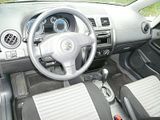
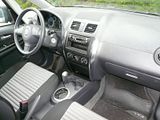
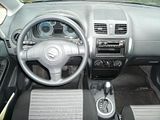
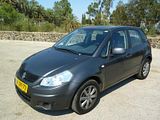
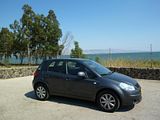
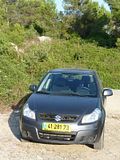
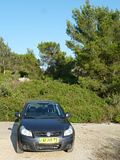 The Suzuki is not a particularly large car and so space in the back is not overly generous. Whilst a passenger sitting behind me would have had no problems, when the client who accompanied me on the trip had his seat set where he wanted it, legroom behind was limited. The SX4 is taller than an average supermini, so headroom is less of an issue, and would compensate a little for the legroom deficit . Whilst three adults could probably squeeze across the width, they would probably not want to travel very far like that. The boot area looks quite generous, as it is deep, even if the floor area is not that large. However, the need to accommodate two suitcases and two laptop bags revealed that it is not as large as I thought, and one case ended up on the back seat. Of course, the luggage area can be extended by folding the rear seats. The rear cushion cantilevers forwards and up, allowing the asymmetrically split backrests to drop down into the resulting space. The longer load area is not then flat, however, it is possible to move the floor of the original boot area up, leaving a space underneath. and now creating a flat boot from tailgate to rear seat cushions. Inside the cabin, there are all the usual sort of places to put odds and ends: door pockets, a moderate glove box, and an area in front of the gearlever, moulded for two cup holders, as well as couple of cubby holes on the dash, one hidden by a covering flap.
The Suzuki is not a particularly large car and so space in the back is not overly generous. Whilst a passenger sitting behind me would have had no problems, when the client who accompanied me on the trip had his seat set where he wanted it, legroom behind was limited. The SX4 is taller than an average supermini, so headroom is less of an issue, and would compensate a little for the legroom deficit . Whilst three adults could probably squeeze across the width, they would probably not want to travel very far like that. The boot area looks quite generous, as it is deep, even if the floor area is not that large. However, the need to accommodate two suitcases and two laptop bags revealed that it is not as large as I thought, and one case ended up on the back seat. Of course, the luggage area can be extended by folding the rear seats. The rear cushion cantilevers forwards and up, allowing the asymmetrically split backrests to drop down into the resulting space. The longer load area is not then flat, however, it is possible to move the floor of the original boot area up, leaving a space underneath. and now creating a flat boot from tailgate to rear seat cushions. Inside the cabin, there are all the usual sort of places to put odds and ends: door pockets, a moderate glove box, and an area in front of the gearlever, moulded for two cup holders, as well as couple of cubby holes on the dash, one hidden by a covering flap. 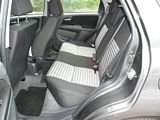
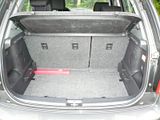
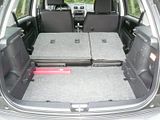
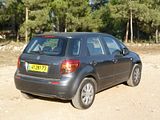
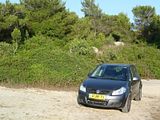
 Just as I had no clue on the engine fitted to the test car, so there were no badges to indicate whether the car was the GLA or GLX model. The paperwork suggested that it was a GLA, which saved me from making a detailed perusal of the website, from which I would perhaps have been able me to deduce the answer, though not all of that seemed readily to translate from the Hebrew! Suffice to say that the SX4 was not over-endowed with fripperies, but it did have all the bases covered. Most importantly, given the ambient temperatures, air conditioning did feature, and this proved well up to the challenge of some very warm afternoons, though it was sometimes necessary to put the fan on the third of four speeds, at which point it became rather noisy, to get the temperature down. I did not experiment much with the radio unit, but noted that like many Japanese cars, it did feature particularly small and fiddly buttons.
Just as I had no clue on the engine fitted to the test car, so there were no badges to indicate whether the car was the GLA or GLX model. The paperwork suggested that it was a GLA, which saved me from making a detailed perusal of the website, from which I would perhaps have been able me to deduce the answer, though not all of that seemed readily to translate from the Hebrew! Suffice to say that the SX4 was not over-endowed with fripperies, but it did have all the bases covered. Most importantly, given the ambient temperatures, air conditioning did feature, and this proved well up to the challenge of some very warm afternoons, though it was sometimes necessary to put the fan on the third of four speeds, at which point it became rather noisy, to get the temperature down. I did not experiment much with the radio unit, but noted that like many Japanese cars, it did feature particularly small and fiddly buttons. 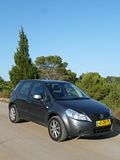
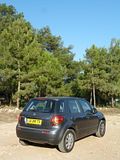
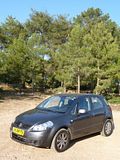
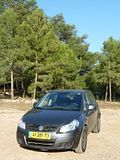
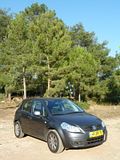
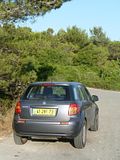
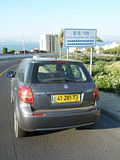
 Suzuki might be a minority player in Western European markets, but it became clear that they do far better in Israel, as do many of the other marques that struggle further west. The SX4 is a common sight, in both saloon and hatchback form. Whilst I still find the boot of the saloon version looks like something of an after-thought, the hatch looks – to my eyes at least – quite good in literally any colour other than the grey of my test car. Cars are expensive in Israel, and the local website suggests that a model like my rental car would cost 112,000 NIS, which is around £25,000. Combined with fuel that is no cheaper than in the UK, purchase prices like that help to explain why the more premium brands that now dominate UK and German sales charts are far less of a common sighting in Israel, and I noted very few sporting models at all. That means that car buyers are more interested in something which simply gets the job done. In that regard, the SX4 probably fulfills the brief quite well. It appeared well built, it is adequately spacious, decently economical, reasonably comfortable and quite practical. If that is all you are seeking, then it would be a reasonable bet. Set your expectations a little higher, and it soon became clear that the paintwork on this car was symbolic of what I got: grey motoring. An automotive utility, and nothing more.
Suzuki might be a minority player in Western European markets, but it became clear that they do far better in Israel, as do many of the other marques that struggle further west. The SX4 is a common sight, in both saloon and hatchback form. Whilst I still find the boot of the saloon version looks like something of an after-thought, the hatch looks – to my eyes at least – quite good in literally any colour other than the grey of my test car. Cars are expensive in Israel, and the local website suggests that a model like my rental car would cost 112,000 NIS, which is around £25,000. Combined with fuel that is no cheaper than in the UK, purchase prices like that help to explain why the more premium brands that now dominate UK and German sales charts are far less of a common sighting in Israel, and I noted very few sporting models at all. That means that car buyers are more interested in something which simply gets the job done. In that regard, the SX4 probably fulfills the brief quite well. It appeared well built, it is adequately spacious, decently economical, reasonably comfortable and quite practical. If that is all you are seeking, then it would be a reasonable bet. Set your expectations a little higher, and it soon became clear that the paintwork on this car was symbolic of what I got: grey motoring. An automotive utility, and nothing more.2011-07-22 18:37:07






































































